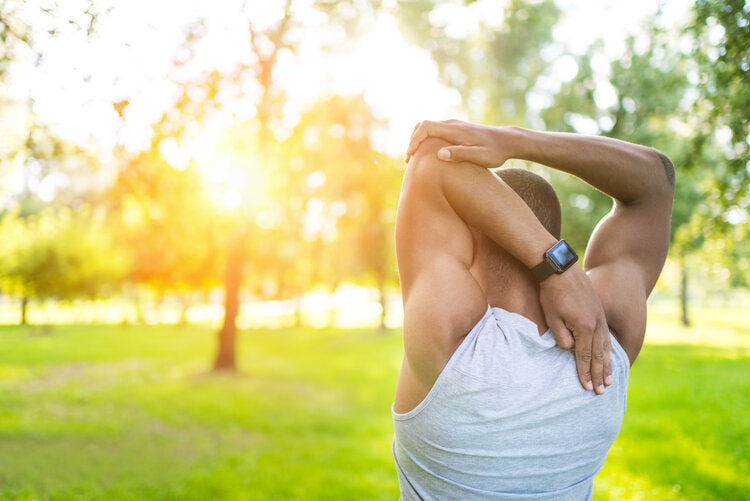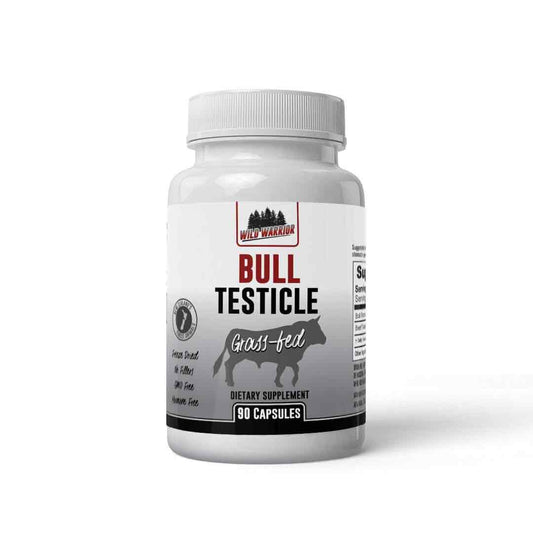The following is a guest post from Chris via BornTough.com
Apart from endurance, balance, and strength, you have to train for flexibility.
Many people think they don’t need the elasticity in their body because they’re just working out to get shredded, not for gymnastics or whatever else stereotype people have about flexibility workouts.
This common misconception that disregards the importance of stretch workouts from our lives leads to serious injuries and pain.
It doesn't matter whether you're a BJJ athlete, a gymnast, a fitness enthusiast, or a bodybuilder.
Engaging in flexibility and stretch workouts is imperative for everyone.
It’s plausible that most of us aren’t aware of how our synergist and agonist muscles work together (and against each other) to perform all the actions that we do.
However, without getting into the details, let’s just say that even when you’re engaging in strength workouts, you’re at high risk of injuring yourself.
Big muscles without enough stretchability will eventually cause extreme pain when they face pressure from one side.
The situation becomes worse with impactful jerks such as those caused by accidents. Imagine those huge guns swelling up because of a dislocated joint.
This is probably why experts in the field often refer to flexibility exercises as mobility workouts.
Therefore, you must work on inducing some elasticity in your body to be able to endure stretches as well as give yourself a better chance to survive collisions and accidents.
So, get your gym apparel on and prepare yourself for some comfortable and some uncomfortable stretches.
You’ll also find that these stretch workouts can help you attain that shredded physique that most people want:
Standing Hamstring Stretch
The standing hamstring stretch is perhaps a staple to flexibility workouts.
This exercise makes you stretch your body to make your head come close to your knees in a bending position.
While holding your calves from behind (the leg tricep area) with your hands, you bend over without bending your legs to close the distance between your hands and head.
You'll feel the stretch over in your neck as well as your glutes, calves, and hamstrings.
Hold this position for at least a minute or two depending upon the level of pain you feel.
You’ll probably appreciate the importance of the workout once you understand how beneficial it is for the back.
Lunge with Spinal Twist
The lunge is a stretch itself that is famous for being part of many strength workout regimens.
The addition of a spinal twist in the workout grants you additional elasticity by targeting your back.
You start by standing with your feet together and taking a big step forward with one foot (left) to get in a staggered stance.
Bend the forward leg’s knee (left) and get into a lunge position. The other leg (right) should be behind you, fully stretched and extended.
The foot of the leg behind you (right) should have its toes on the ground but the heel should be pointing towards the sky.
To balance yourself, place your hand (right) on the floor. Take your other hand (left) and turn to reach for the ceiling.
This hand should be stretching up. You can hold this position for anywhere from 30 seconds to 2 minutes before switching sides.
Triceps Stretch
Triceps stretches do more than just induce elasticity to your triceps.
This workout engages your back and shoulder muscles while strengthening your neck.
To get started, kneel on the floor with your feet pointing downward behind you and your knees in front.
Bend your left elbow and extend your left hand to reach the central top area of your back, right where the shoulder wings meet.
Use your right hand to extend and reach your left elbow that you can gently push it down and feel the stretch as long as it’s comfortable.
Do the same for the other side.
90/90 Stretch
The 90/90 stretch involves turning your legs at 90-degrees from each other as well as to your body.
Sit with your right knee coming over to your left. Your calf should be perpendicular to your body.
Your foot’s sole should be facing left.
Now take your left leg and turn it at 90-degrees left behind you. The sole of this foot should be facing backward.
Though this can prove to be a difficult exercise for beginners, it’s recommended to not go all the way if your body doesn’t allow it.
The point of all stretch exercises is to feel a slight stretch and make our muscles get used to it.
If you induce a lot of tension in the muscles stretching them further than their limits, you’ll be inviting a world of hurt.
As you do this exercise, make sure to keep your right hip settled on the floor while gradually trying to put the left one down as well.
It might seem impossible at first and that’s okay. You’re just doing it for the mild stretch.
Figure Four Stretch
A figure four stretch is great for your hips, lower back, hamstrings, and glutes.
To do this workout, get down on your back and have your feet flat on the floor while having your knees bent.
Take one foot (left) and raise it to cross over and rest on the thigh of your other leg (right).
Now, hold your leg on the ground (right) from behind the thigh and raise the leg up.
You’ll notice as both your legs come up, you’ll feel a comfortable stretch that you need to hold for 30 seconds to 2 minutes.
Important Tips for Flexibility Workouts
Before you engage in these workouts, it’s important to understand a few things.
Firstly, let’s take a look at the concept of static and dynamic flexibility.
Static stretches comprise bodily positions including lying, sitting, or standing in place and holding a single position involving extended limbs for a specific time.
These improve everyday mobility and reduce the strain felt in your back and other muscles.
Dynamic stretches are the movements that are controlled and executed solely to prepare the muscles, ligaments, and other soft tissues for increased strength, endurance, and elasticity.
As it might be clear already, dynamic stretches save you from injuries while static stretches allow you to execute everyday tasks without worrying about your back giving out.
Another thing to make sure of before engaging in these workouts is to have proper workout apparel such as workout shorts for men or yoga pants for women.
Since you’ll be going for flexibility and irregular extensions, normal gym clothes will just get in the way and minimize effectiveness.
Apart from the above, it’s important to note that flexibility exercises are always done after a warmup when your muscles are warm.
You'll be risking injury, sprains, and sour muscles if you go in with a cold body and start stretch workouts.
Try engaging in light aerobic exercises to get your blood and sweat flowing. Common drills to achieve this include:
Rope jumping
Lunges
Running in Place
High Knees
Jumping jacks
Takeaway
Now that you know the importance, the way to perform, and maximize the potential of flexibility workouts, it's time to get started on your training.
Just make sure that you don’t hurt yourself by pushing your limits too far. Remember, it will take time as all bodies and all muscles are different.
Even if you feel flexible in your shoulders and arms, it doesn’t mean that your legs and quads will be the same.
Therefore, take your time and spare yourself the pain.





